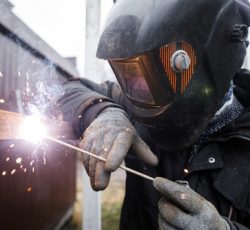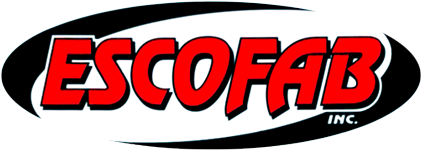 When it comes to welding, there are various processes that can be utilized depending on the specific needs and requirements of the project. Three of the most popular welding methods are stick welding, MIG welding, and TIG welding. Each of these methods has its own unique characteristics and advantages, making them suitable for different situations. In this blog post, we will explore what stick welding, MIG welding, and TIG welding are, the metals they can be used on, and the benefits they offer.
When it comes to welding, there are various processes that can be utilized depending on the specific needs and requirements of the project. Three of the most popular welding methods are stick welding, MIG welding, and TIG welding. Each of these methods has its own unique characteristics and advantages, making them suitable for different situations. In this blog post, we will explore what stick welding, MIG welding, and TIG welding are, the metals they can be used on, and the benefits they offer.
What is Stick Welding?
Stick welding, also known as Shielded Metal Arc Welding (SMAW), is one of the oldest and most versatile welding methods available. It is named after the stick-like electrode that is used during the process. Stick welding involves creating an arc between the electrode and the base metal, which melts both the electrode and the base metal. As the weld cools, it solidifies and creates a strong bond.
Metals Used in Stick Welding:
Stick welding can be used on a variety of metals, including carbon steel, stainless steel, cast iron, and nickel alloys. This makes it a popular choice in construction, pipeline welding, and repair works.
Benefits of Stick Welding:
One of the key advantages of stick welding is its versatility. It can be used in outdoor settings, as it does not require a shielding gas like MIG and TIG welding. Stick welding is also relatively economical, as the equipment is less expensive compared to other methods. Furthermore, stick welding produces slag as a byproduct, which helps to protect the weld from atmospheric contamination.
What is MIG Welding?
Metal Inert Gas (MIG) welding, also known as Gas Metal Arc Welding (GMAW), is a semi-automatic welding process. It involves feeding a continuous wire electrode into the weld pool, while a shielding gas is simultaneously supplied to protect the weld from atmospheric contamination. The wire electrode acts as both the heat source and the filler material.
Metals Used in MIG Welding:
MIG welding can be used on a wide range of metals, including carbon steel, stainless steel, aluminum, and copper alloys. This versatility makes it a go-to method for automotive, fabrication, and construction industries.
Benefits of MIG Welding:
MIG welding offers several advantages. Firstly, it allows for high welding speeds due to the continuous wire feed. Secondly, it produces clean and precise welds, thanks to the control over the electrode and shielding gas. Additionally, MIG welding is relatively easy to learn and provides good penetration and fusion.
What is TIG Welding?
Tungsten Inert Gas (TIG) welding, also known as Gas Tungsten Arc Welding (GTAW), is a precise and versatile welding process. It uses a non-consumable tungsten electrode to create an arc and a separate filler material, if required. During TIG welding, a shielding gas, typically argon or helium, is used to protect the weld from contamination.
Metals Used in TIG Welding:
TIG welding is suitable for welding a wide range of metals, including stainless steel, aluminum, titanium, and copper alloys. It is commonly used in aerospace applications, as well as in artistic and precision welds.
Benefits of TIG Welding:
TIG welding offers exceptional control and precision, making it ideal for intricate and delicate welds. It produces high-quality welds with smooth finishes, minimal distortion, and low spatter. TIG welding also allows for good heat control, which is crucial when working with thin materials.
Differences between Stick, MIG, and TIG Welding:
Stick welding, MIG welding, and TIG welding each have their own set of characteristics and applications. Stick welding is versatile, affordable, and suitable for outdoor use. It produces strong welds and is commonly used for repair and construction works.
MIG welding is known for its speed, cleanliness, and ease of use. It is commonly used in fabrication and automotive industries due to its high welding speeds and clean welds.
TIG welding offers the utmost precision, control, and quality. It is ideal for delicate and artistic welds, as well as for welding exotic metals.
Ultimately, the choice between stick welding, MIG welding, and TIG welding depends on the specific project requirements and personal preferences. So, do your research, consider the materials, and choose the welding process that best suits your needs.
Need a Machine Shop in Atmore, AL?
Escofab Inc. has been dedicated to providing quality machining and fabrication since 1981! Here at Escofab Inc. we utilize fabricating and machining to your specifications. We work to fit your needs and ensure customer satisfaction. Our friendly and informative staff are eager to assist you! Give us a call or come on in today; walk-ins welcome!
